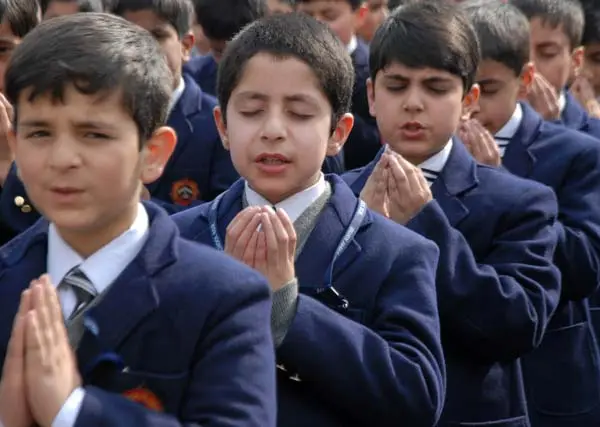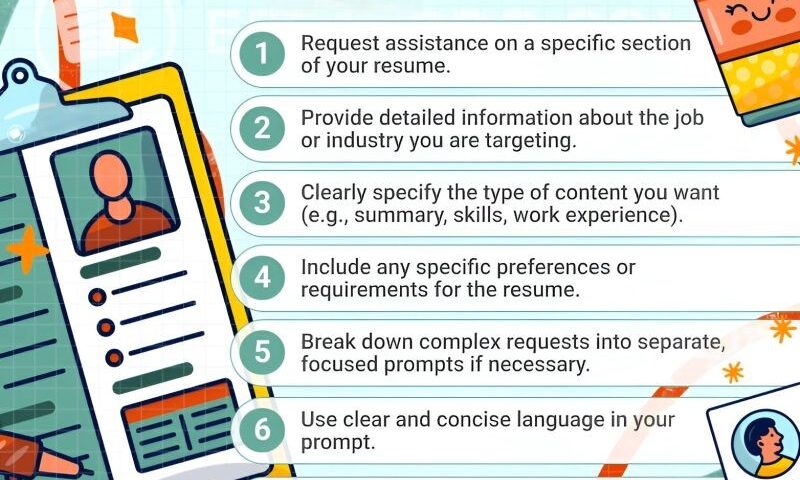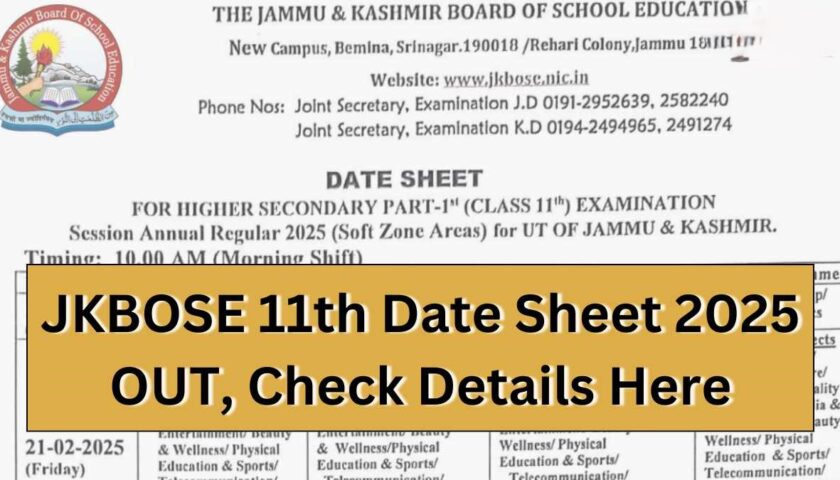Academic Recovery in Jammu & Kashmir: Navigating Loss, Restoring Hope
By: Javid Amin| 14 September 2025
Disruptions to education have far-reaching, long-term impacts—on individuals, communities, and society at large. In Jammu & Kashmir (J&K), multiple crises this year—armed conflict described as “war-like situation,” followed by devastating floods—have significantly disrupted schooling. More than 40 schools have been damaged or destroyed. Many students have missed extended classroom time. Recognizing the severity of this academic loss, the J&K government has taken a crucial step: inviting suggestions from parents, educators, students, and civil society on how best to compensate for lost learning.
In this article, we expand upon the government’s plans, explore possible solutions already being considered, evaluate international best practices, and propose a detailed roadmap for education recovery in J&K.
The Nature and Scale of the Academic Loss
01. Conflict, Natural Disasters, and Disrupted Schooling
The disruption in J&K has two intertwined causes:
-
Conflict-induced instability: Earlier this year, a “war-like situation” affected daily life. Normal schooling was severely impeded; many schools shut down for security reasons, transportation was affected, and families were displaced.
-
Natural disaster: Floods: Subsequent floods damaged infrastructure (over 40 schools), washed away learning materials, and displaced both students and teachers.
This dual disruption meant not just missed classroom hours, but also loss of learning continuity, social interaction, and even assessment opportunities.
02. Academic, Psychological, and Social Impacts
Academic loss is not restricted to content not taught. The full impacts include:
-
Learning gaps: Certain students may have missed foundational concepts (reading, arithmetic) which are prerequisites for higher learning.
-
Variations in impact: Students in rural or flood-hit areas are likely suffering more acutely; remote pupils, those without internet access, or households under economic stress may be left further behind.
-
Mental health: Stress, trauma, displacement affect attention, motivation, and the ability to learn.
-
Sociocultural impacts: Loss of routine, socialization with peers, access to extracurriculars—all affect holistic development.
03. Why Immediate Action Matters
Delaying mitigation can lead to:
-
Dropouts: Students who lag significantly may not return to school.
-
Increased inequality: Privileged students may find ways to make up losses; disadvantaged ones may not.
-
Long-term societal and economic costs: Poor learning outcomes reduce employability and productivity.
Thus, the government’s call for solutions is timely and essential.
What the Government Is Proposing / Considering
In her statement, Education Minister Sakina Itoo has indicated openness to “feasible and inclusive solutions.” Several models are being considered, many reflecting international best practice:
01. Diagnostic Assessments to Identify Learning Gaps
-
Purpose: To assess what students have and have not learned; to map which areas require remediation.
-
Design: Age/grade-appropriate tools; covering core competencies (language, maths, science); possibly using standardized tests or locally adapted assessments.
-
Implementation challenges: Large numbers of students; fair, non-intimidating assessments; teacher training for accurate evaluation.
02. Remedial Instruction — Extra Classes & Tutoring
-
Extra classes: Scheduled catch-up classes, perhaps after school hours or during weekends, targeted especially at subjects where gaps are large.
-
Peer-and teacher-led tutoring: One-on-one or small group sessions; possibly involving senior students, community volunteers; emphasis on foundational literacy and numeracy.
03. Curriculum Adjustments: Focus on Core Competencies
-
Rationalizing syllabus: Removing non-core or redundant content for now; prioritizing literacy, numeracy, essential scientific reasoning.
-
Scaffolding learning: Structuring topics so foundational skills are built first, enabling more advanced learning to resume steadily.
04. Blended Learning: Online + Offline
-
Why blended: To reach students who can access the internet and devices, while also accommodating those who cannot.
-
Modes:
-
Online live or recorded lectures
-
Radio / television broadcasts
-
Printed packets or workbooks for offline use
-
Mobile phone-based learning (SMS, WhatsApp voice notes, etc.)
-
05. Teacher Training for Post-Crisis Pedagogy
-
New pedagogical skills: How to teach in trauma-informed ways; how to remediate learning gaps; how to engage students who have been offline for months.
-
Professional development: Workshops, peer support networks, mentorship, possibly through remote modules as well.
06. Community Involvement & Home-based Learning
-
Parents & caregivers: Engaging families to support study at home; simple tools or guidance so parents can help children.
-
Local community hubs: Where safe, small groups meeting under supervision; using local resources (community centers, libraries).
Public & Stakeholder Feedback: What’s Being Urged
Public response has highlighted several additional priorities that may make the recovery more equitable, manageable, and sensitive to actual needs.
01. Mental Health Support
-
Why it matters: Students exposed to trauma—conflict, floods, displacement—need psychological resilience. Stress, anxiety, depression can severely hamper learning.
-
Suggested measures: School counselors; psycho-social interventions; safe spaces in schools to talk; teacher training to recognize and support mental health issues.
02. Flexible Exam Schedules & Syllabus Rationalization
-
Flexibility: Delayed or staggered examinations; alternative assessments; allowing students to choose optional components.
-
Rationalization: Reducing syllabus load; focusing on essential topics to enable catch up without overwhelming students.
03. Digital Access Expansion
-
In remote and flood-affected areas, connectivity is unreliable or absent. Students without devices or electricity cannot benefit from online learning.
-
Suggestions: Distribute devices; set up charging stations; partner with telecom providers for connectivity; content offline-friendly.
04. Inclusivity & Equity
-
Ensuring girls, marginalized groups, students with disabilities receive special attention (transport, assistive devices, learning materials).
-
Considering language, cultural context (especially in areas with diverse linguistic backgrounds).
Learning from Global & National Best Practices
To make the recovery plan strong, it helps to look at precedents and lessons from India and elsewhere.
01. India’s Compensation of Academic Loss Programme (CALP)
-
What is CALP: A government-backed initiative after COVID-19 school closures, aimed at helping students recover through remedial instruction.
-
Components: Diagnostic tests; structured learning recovery (extra classes, remedial teaching); focus on foundational skills.
-
Strengths & challenges: Effective when adequately resourced; hard to reach remote students; need for teacher capacity building.
02. International Models: Examples from Other Crisis Zones
-
Nepal (post-earthquake recovery): Use of temporary learning spaces; mobile schooling; teacher training with focus on trauma.
-
Kenya / Uganda: Radio schooling for remote learners; volunteer tutors.
-
Australia & New Zealand (post-disaster schooling): Emphasis on mental health first; flexibility in assessments; collaborating with parents.
03. What Makes Some Models Successful
Key elements:
-
Speed: Rapid responses to re-open schools, deploy assessments.
-
Focus on fundamentals: Literacy & numeracy are critical foundations for other subjects.
-
Teacher support: Well trained, given resources, both material and emotional.
-
Community engaged: Local support builds trust and ensures relevance.
-
Flexible delivery: Multiple modes to reach all students.
-
Monitoring & evaluation: Tracking progress to adapt interventions.
Proposed Roadmap for Jammu & Kashmir’s Academic Recovery
Drawing on the government’s plans, stakeholder input, and best practices, here is a detailed, phased roadmap for restoring and strengthening learning in J&K.
| Phase | Time-Frame | Key Activities | Responsible Parties | Resources Needed |
|---|---|---|---|---|
| Phase 1: Assessment & Planning (Now – End September) | Immediate (1‐month) | Conduct broad diagnostic assessments; map affected schools; survey student access to devices/internet; solicit public suggestions further. | Education Dept., local school districts, NGOs, community leaders | Assessment tools, survey teams, data infrastructure |
| Phase 2: Pilot Remedial Interventions (October – December) | 2–3 months | Begin remedial classes in selected worst-affected areas; implement blended learning pilots; teacher training workshops; mental health pilot programs in some schools. | Teachers, local NGOs, District Education Officers | Remedial materials, online content, mental health professionals |
| Phase 3: Scale-Up & Infrastructure Recovery (January – June) | 6 months | Rebuild/repair damaged schools; expand pilot programs to full scale; distribute devices; improve connectivity; full rollout of syllabi rationalization & flexible exams. | State Govt., Public Works, Telecom providers, Teachers Union | Infrastructure funding, device procurement, policy support |
| Phase 4: Monitoring, Evaluation & Policy Adjustment (Ongoing) | Persistent | Regular assessments; track student learning outcomes; feedback loops with stakeholders; adjust strategies based on evidence. | Education Authorities, Research Institutions, Civil Society | Data systems, evaluation capacity |
Policy & Institutional Considerations
For any recovery program to succeed, there must be strong institutional foundations and realistic policies.
01. Policy Support & Funding
-
Legislation/Policy: State government to formalize a recovery policy or mandate for academic loss compensation.
-
Budget allocation: Funds for repair, remediation, teacher hiring, materials, connectivity.
02. Collaboration & Stakeholder Engagement
-
Multi-sector collaboration: Education, Health (for mental health), IT/Telecom, Social welfare.
-
Local engagement: Involve parents, local community leaders, NGOs, student bodies.
03. Equity & Inclusivity Safeguards
-
Ensure gender parity: Girls may face additional barriers following crises.
-
Support for students with special needs: Physical disability, learning disabilities.
-
Language & cultural context: Learning materials in local languages; culturally appropriate pedagogy.
04. Technology & Digital Divide
-
Bridging the gap: Provide offline materials; low-tech solutions (radio, TV, mobile SMS) where possible.
-
Device distribution & maintenance: Provide devices and ensure they are usable (power supply, upkeep).
05. Mental Health & Psychosocial Support
-
Training teachers, school staff to recognize trauma, anxiety.
-
Establish counselling services, safe spaces in schools.
-
Peer support groups, possibly facilitated by NGOs or trained counsellors.
Challenges and Potential Risks
Any intervention of this scale will face obstacles. Acknowledging them helps in planning more robustly.
01. Resource Constraints
-
Limited budget, especially when state finances may already be stressed.
-
Shortage of trained teachers for remedial instruction.
02. Geographic & Environmental Barriers
-
Remote villages, mountainous terrain. Access to some schools may remain disrupted due to weather or infrastructure damage.
03. Infrastructure and Technology Reliability
-
Unstable electricity, unreliable internet, especially post-flood.
-
Devices prone to damage, obsolescence.
04. Teacher Burnout & Capacity
-
Teachers themselves may have been affected by conflict/floods.
-
Extra workload (remedial classes, new pedagogical approaches) without adequate support may lead to burnout.
05. Monitoring Difficulties & Implementation Gaps
-
Data collection may be uneven.
-
Corruption or misallocation risks.
-
Delays in execution due to bureaucratic hurdles.
Real Voices — Case Studies & Stakeholder Input (Hypothetical / Illustrative)
Let’s imagine or simulate what students, parents, and teachers might say. These stories help humanize the issue and identify real-world constraints and aspirations.
01. Student in Flood-Affected Area (Kupwara)
“When the floods came, our school was under water. We lost our books, and many days I could not hear from my teacher. Now, even when school reopened, I feel I do not understand some lessons my friends know well. Sometimes I try to study alone, but I need help.”
02. Teacher in Remote Village (Poonch)
“I always walked five kilometres to reach school. After conflict, many students did not come because roads were blocked. With poor internet, my attempts at online teaching were fruitless. If the government provides support—remedial materials, more teachers, training—it will make a difference.”
03. Parent of a Student with Disability (Anantnag)
“Our child could not attend classes during both conflict and floods. Online classes are too difficult. School did not have ramps or accessible materials. We fear she may fall further behind if no special plan is made.”
These voices point to needs that may not be obvious in policy documents: emotional, infrastructural, accessibility-related.
What Success Could Look Like — Key Indicators & Outcomes
To know whether recovery efforts are working, define what “success” means.
| Indicator | Short-Term Outcome (within 6 months) | Medium-/Long-Term Outcome (1-3 years) |
|---|---|---|
| Attendance Rates | Schools open; high percentage of previous students returning. | Reduced dropout rates; stable or rising enrolment. |
| Learning Outcomes | Improvement in diagnostic test scores in literacy & numeracy. | Students performing at grade-appropriate levels; improved performance in board exams. |
| Mental Health & Well-Being | Students report less anxiety; schools have counselling or support options. | Lower rates of psychological distress; better engagement in class. |
| Equity of Access | Students in remote/flood-hit areas able to access learning; girls & disabled students catching up. | Narrowed learning inequalities; inclusive practices embedded. |
| Teacher Preparedness | Teachers trained in remedial & post-crisis pedagogy; feel supported. | Sustainable teacher professional development; improved teaching quality. |
| Infrastructure & Resources | Schools repaired; materials and devices distributed. | Robust, disaster-resilient infrastructure; ongoing investment in technology. |
Recommendations for Implementation
Tying together all the earlier sections, here are refined, actionable recommendations.
-
Launch state-wide diagnostic assessments immediately, using mobile teams if necessary to reach remote areas.
-
Prioritize foundational skills — reading (in local languages), writing, arithmetic — as the basis for all further learning.
-
Set up remedial learning centres in worst-affected areas; include flexible schedules (evenings, weekends).
-
Blend learning modes: online where possible, offline resources (print, radio) elsewhere.
-
Deploy mental health support: hire counsellors; use teacher training to recognize and support trauma.
-
Ensure equality & access: special plans for girls, disabled, remote; include assistive technologies.
-
Provide teacher training in post-crisis pedagogy, trauma-informed instruction, monitoring student progress.
-
Engage parents & communities: involve them in home learning, in decision-making; raise awareness.
-
Strengthen digital infrastructure: provide devices, expand connectivity particularly in remote/flood-affected zones.
-
Monitor, evaluate, adapt: set up feedback loops; use data to adjust curriculum, teaching methods, resource allocation.
Bottom-Line
The academic interruptions in Jammu & Kashmir are large and multifaceted—stemming from conflict, displacement, infrastructure damage, and loss of normalcy. But the government’s decision to ask for public ideas is a positive sign. The true test will be in how well those ideas are acted upon, how equitably and how quickly.
There’s no one-size-fits-all solution; what works in Kashmir valley may differ from solutions in border districts or flood ravaged zones. But drawing on national programs like CALP, international models, and incorporating voices of students, parents, and teachers can shape a recovery that doesn’t merely return to what was, but builds something stronger—more resilient, more inclusive, more attuned to the real needs of children.
If implemented well, the roadmap can not only make up for lost learning, but also transform education in J&K to better withstand future crises, ensure every child has access, and help heal psychological wounds. The end goal: learning continuity, equality, and hope restored.




